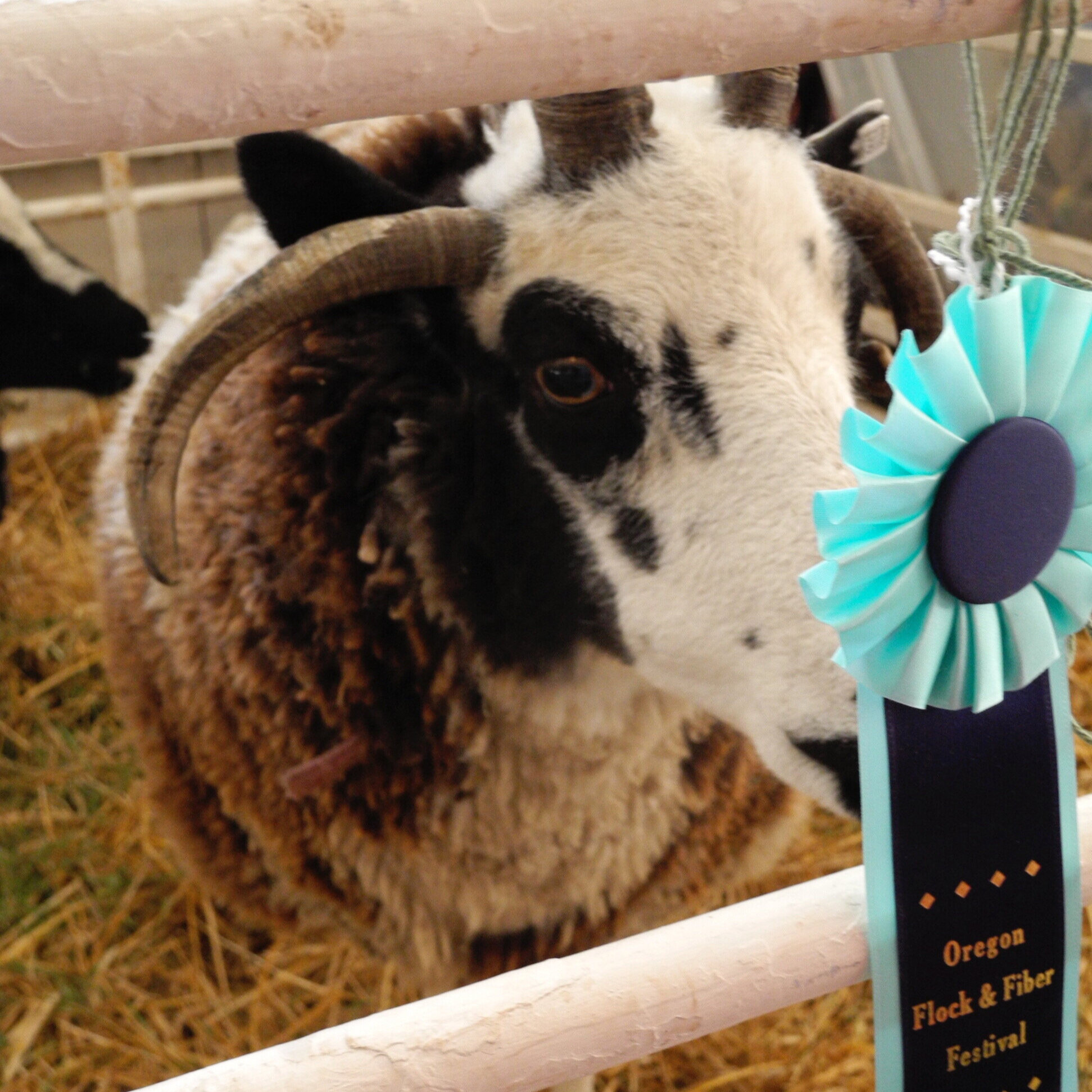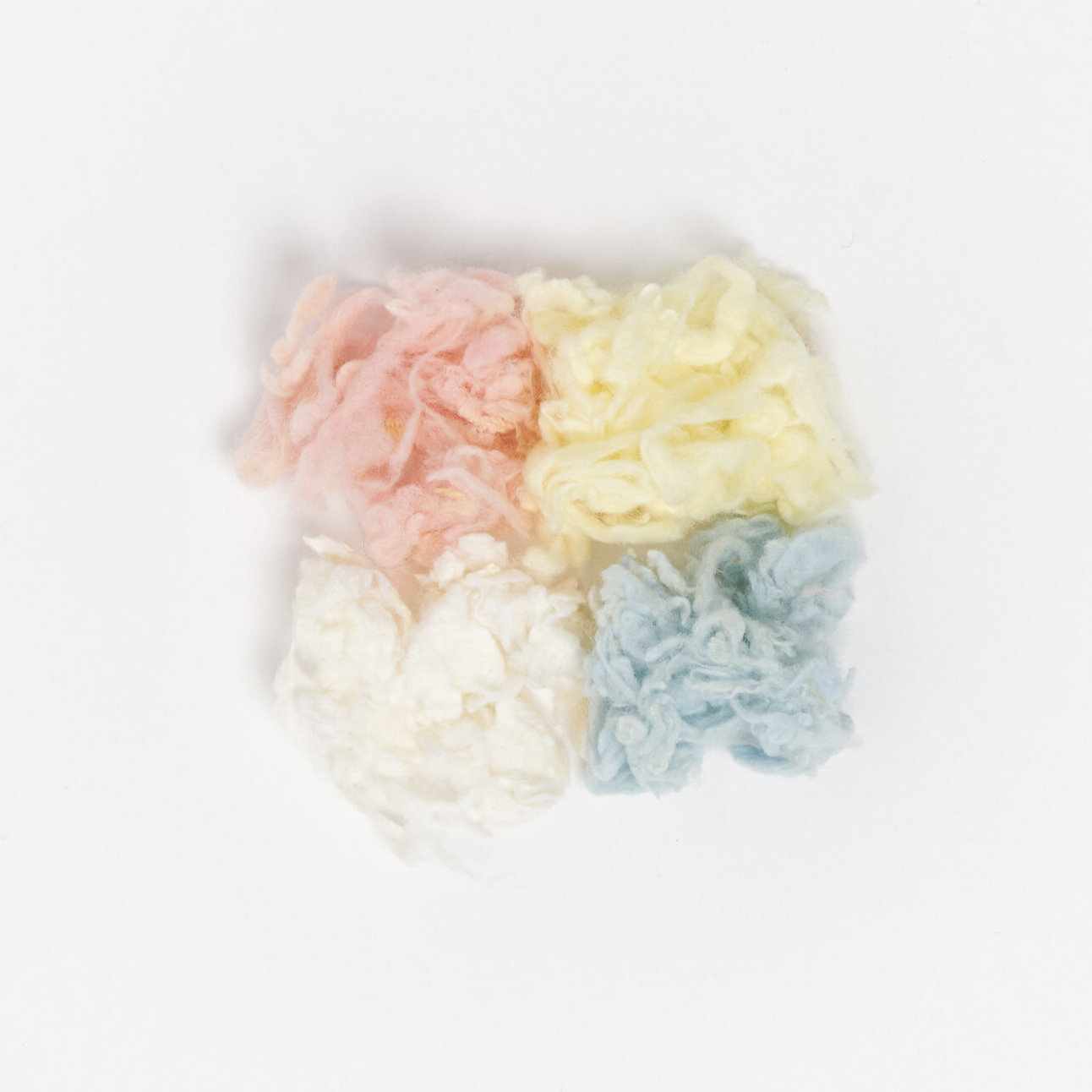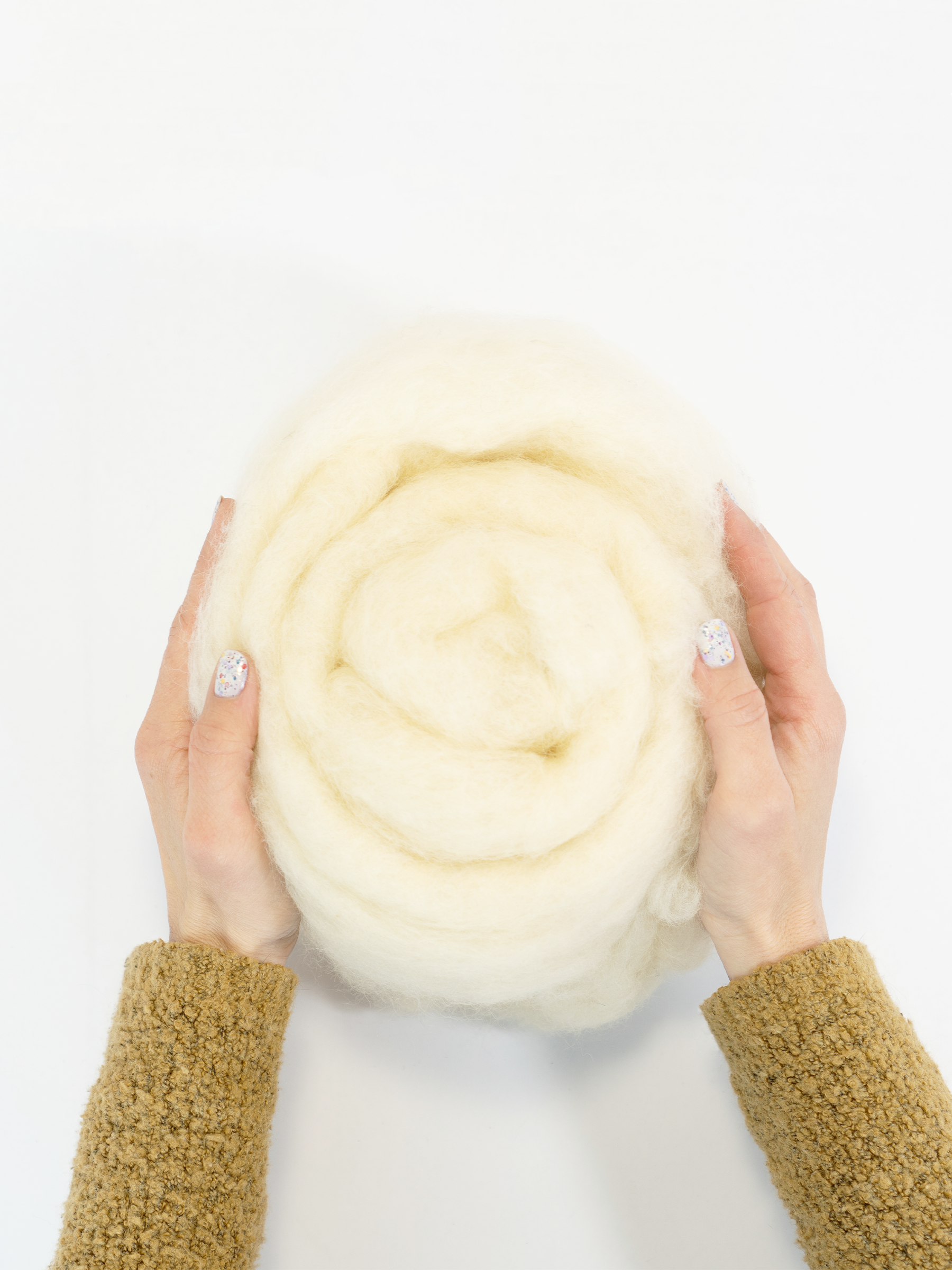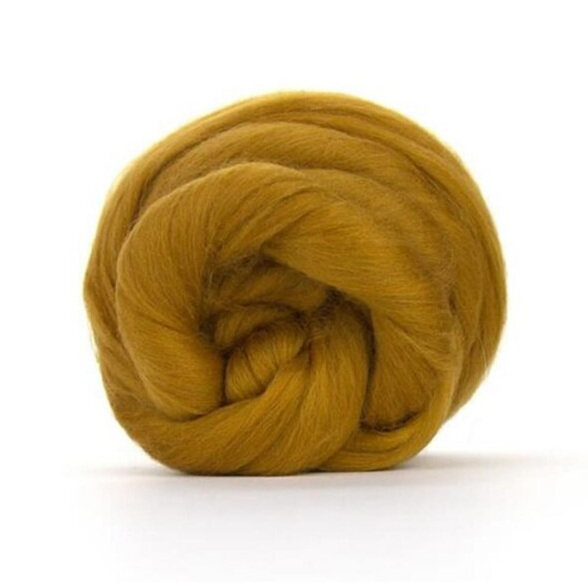The language of wool: frequently used terms for felters and spinners
Learn about the journey wool goes on from raw fleece to finished yarn at a fiber mill. The vocab lesson on the way will equip you to choose the best fiber for your felting and spinning projects!
Raw Fleece
Fresh off the sheep, raw fleece is not processed in any way. It’s greasy and usually has some straw and poop in it. You’ll have to buy it directly from a farm.
Fun fact: you can often buy raw fleeces at fiber festivals! These summertime celebrations are hubs for fiber-giving animals (alpaca, llama, sheep, goats, rabbits, et.c) and their human handlers.
How I use raw fleece: I don’t work with raw fleeces much. Too much mess and labor! However, I have successfully cleaned fleeces in a top-loading washing machine on occasion. Google it!
Scoured Wool / Scoured fleece / locks
The least processed fiber, scoured wool is raw fleece that is washed so the debris and grease are removed. The lock structure is still intact, meaning this fiber has a natural texture and looks like it does when it’s growing on the sheep. Locks are a common example of scoured wool used in felting
Fun fact: Up to 1/3 of the total weight of a raw fleece is “grease” - a mix of lanolin and dirt. At larger fiber mills, the scouring process includes separating and refining the grease which is then sold to the beauty industry.
How I use locks: I love to add locks to my creations as texture. Probably the most famous use of locks is gnome hair. Scoured wool makes excellent textured coats on felted sheep and other critters.
Batts / wool batting / FLEECE Batts
Once the scoured wool is free of grease and debris, it goes through a carding machine. The carding machine brushes the fibers and breaks up the lock structure so the texture is uniform and fluffy.
Wool batts look similar to super thick quilt batting. The fiber is removed from the carding machine in thin sheets, which are layered up to form thick fluffy sheets. Wool bats have ‘chaos in the wool’ - meaning the fibers are going in all directions. Batts felt quickly and conceal the poke marks made by the felting needle.
Fun fact: when you buy fiber from small farms or producers, it will often be in the form of wool batts because they are possible to produce on small-scale equipment.
How I use carded wool: When I’m working on a project bigger than an apple, I use carded wool to build up the core shape. It’s cheaper than dyed roving, and the coarse wool combined with a coarse felting needle works up really quickly. I also love to use it as stuffing for hand-sewn stuffed animals. My favorite carded wool is medium-coarse and free of debris like this one sourced from Quaker farms.
Carded Wool ROVING
Carded wool roving is processed one step further than wool batting. The word “roving” refers to the continuous strand of fibers… it looks like a long puffy rope. The wool goes through a machine that brushes the fibers generally in the same direction - creating the grain that is easy to see.
Notice that this carded wool picture has some lumps and bumps. That nubby texture is normal (and desirable) for the needle felter.
Fun fact: carded wool roving is the most common needle felting fiber out there.
How I use carded roving: I work with carded roving everyday in my own studio. My favorite roving has a blend of different colored fibers carded together for a heathered look.
COMBED TOP / Wool Tops
Roving that has been combed looks shiny and smooth - kind of like a horse’s tail. Combed top has been through a machine that pulls all the fibers in the same direction.
Combed top will needle felt, but after all your hard work the texture of your felt will be hairy and pockmarked unless you use a very very fine needle.
Most commercial yarn is spun from combed top - and it’s often used for wet felting.
Fun fact: combed top goes through a process that removes all the debris and short pieces of fiber from the finished roving - up to 15% of the weight. This byproduct is useful to felters as wool sprinkles - AKA nepps.
How I use combed top: I use combed top for my next-to-the-skin wet felting projects. It’s great for felted slippers because I can anticipate the shrinkage needed for a good fit!
Prefelt
Prefelt is a sheet of wool fabric that hasn’t been fully felted. It looks like loose flannel fabric. Prefelt is handy for cutting shapes and then felting it right on to your project.
Machine made prefelt is almost always needle punched wool - you can usually see the tiny holes made by the needles. Prefelt is often used by nuno felters and wet felters.
Fun fact: you can easily make your own prefelt, using wet felting or needle felting. Just felt your fibers lightly until it’s like puffy fabric. You should be able to cut it with scissors and the fabric hold its edge.
How I use prefelts: I use prefelt when I want a specific shape that’s really smooth - for instance the masks in my penguin kit.







